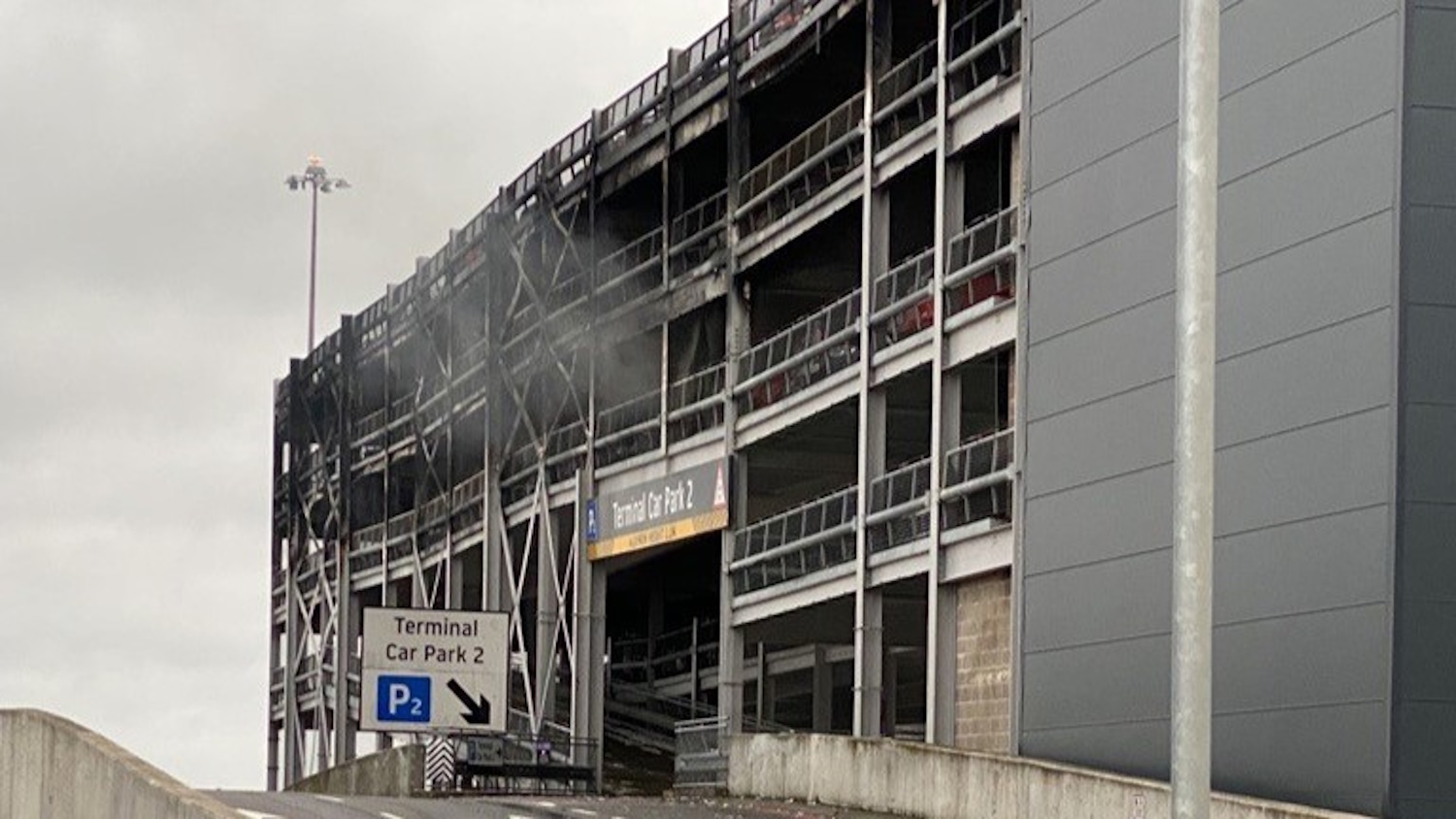With significant fires in multi-storey car parks over the past five years, why are we not learning from these and looking to protect these buildings with sprinklers, asks Iain Cox.

The fire on 10 October at Luton Airport’s Terminal Car Park 2 led to a “significant structural collapse” with up to 1,500 vehicles destroyed or damaged. Such was the intensity of the fire that broke out on level three, witnesses reported hearing significant bangs as tyres and car elements were overwhelmed by the heat.
A total of 15 fire engines and more than 100 firefighters from Bedfordshire, Buckinghamshire, Cambridgeshire, Hertfordshire, Northamptonshire and London fought the blaze.
Surprisingly, shortly after the fire a spokesperson for the local council, who owns the airport, noted that they had “not seen this coming”. The challenge of fire is that it is not predictable. However, there have been several pointers to the potential scale of a fire.
This catastrophic fire is not a one-off event, as we have seen major fires in car parks on previous occasions. This led to alerts from several bodies as fires were noted in other territories in multi-storey car parks, ranging from a shopping mall in Ireland to another airport car park in Norway.
Many people are questioning the lack of sprinklers in the Luton airport car park. The fact that the structure was relatively new, having been built in 2019 at a reported cost of £20 million, has also added to this.
Rethink sprinkler regulations
While there was speculation on the cause and the originating vehicle, the real focus of our attention should be how rapidly it spread among numerous vehicles of differing fuel sources, as can be seen in early videos of the fires.
In the absence of any other intervention, fire will spread, and when the fire services arrive they are faced with a large fire, which is hard to stop. The scale of fire endangers surrounding buildings, and the collapsing construction can impact attached structures.
The current regulatory guidance does not require sprinklers to be installed, but this is not keeping up with the fire load of modern vehicles. The guidance can be traced back to fire tests and observations from the late 60s and 70s. It foresaw the rise of plastic components, but not their extent.
It is a fact that the average car today has significant amounts of plastics and other combustibles in its construction. In short, modern cars can burn very quickly, producing much larger and hotter fires than was previously considered possible. In fact, the government has known this from its own research carried out in the late 2000s.
Going forward, we need to question why regulations don’t call for sprinklers. Installing sprinkler systems is the most effective prevention method. Now is the time for a rethink to our approach to mitigate the impact of fire and safeguard these buildings and, most importantly, those living, working and enjoying spaces attached to them.
Comments
Comments are closed.












Lithium iron battery perhaps …!!!?